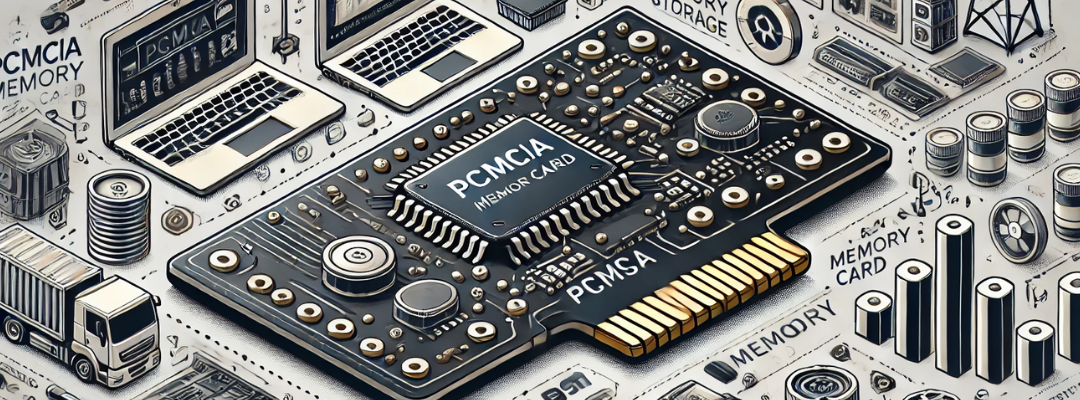A PCMCIA (Personal Computer Memory Card International Association) memory card is a type of removable expansion card standard that was widely used in laptops and other portable devices during the 1990s and early 2000s. It allowed users to expand the memory, storage, or functionality of their devices by inserting these cards into PCMCIA slots. PCMCIA cards could include memory cards, modems, network adapters, and more.
Function of a PCMCIA Memory Card
- Memory Expansion: PCMCIA memory cards were primarily used to expand the memory or storage capacity of laptops and other portable devices. This was useful in earlier laptops with limited internal memory, providing users with additional storage space for data, programs, or media.
- Removable Storage: Like modern flash drives or SD cards, PCMCIA memory cards served as removable storage devices, allowing users to transfer files between devices or back up important data. The cards could be easily swapped or replaced without opening the device.
- Peripheral Connectivity: Besides memory, PCMCIA cards were used to add peripheral devices such as modems, network adapters, and even external hard drives. This gave laptops access to internet connectivity or networking capabilities without built-in hardware, making it an essential tool for mobile computing at the time.
- Plug-and-Play Functionality: PCMCIA memory cards could be inserted or removed while the computer was on (hot-swapping), making them easy to use and highly versatile for various functions, such as data transfer, memory expansion, or connecting external devices.
- Support for Specialized Functions: In addition to general memory cards, PCMCIA cards were used to perform specialized functions in specific industries, such as in industrial control systems, telecommunications, and medical devices. They allowed for the easy addition of hardware or functionality in portable systems.
Importance of PCMCIA Memory Cards
- Portable Storage and Expansion: During the early era of portable computing, PCMCIA memory cards provided a convenient way to increase the limited storage or memory of laptops. This was essential for users who needed more space for applications or data without relying on bulky external drives.
- Versatility in Adding Peripherals: The PCMCIA standard wasn’t just limited to memory. It allowed laptops to connect to modems, network adapters, and even external devices like CD-ROM drives. This versatility was particularly important before built-in wireless connectivity and Ethernet ports became standard in laptops.
- Compact and Lightweight Design: PCMCIA cards were designed to be slim and lightweight, fitting easily into laptops and portable devices. This was critical at a time when portability was a key focus of laptop design, and users needed compact solutions for memory and peripheral expansion.
- Hot-Swappable: PCMCIA cards could be inserted and removed without shutting down the device, which improved usability and made them a practical solution for mobile professionals. The ease of adding or replacing storage and peripherals made PCMCIA cards a key component in the early mobile computing environment.
- Industrial and Specialized Applications: PCMCIA memory cards were widely used in specialized fields, such as telecommunications, industrial control systems, and medical devices, where the ability to quickly and easily add memory or specialized hardware was essential. Their ruggedness and portability made them well-suited for use in challenging environments.
- Legacy and Transition: Although PCMCIA has largely been replaced by more modern standards like USB and PCI Express, its impact on the development of portable computing and peripheral connectivity was significant. It paved the way for later technologies by standardizing how laptops and portable devices could be expanded.


Recent Comments